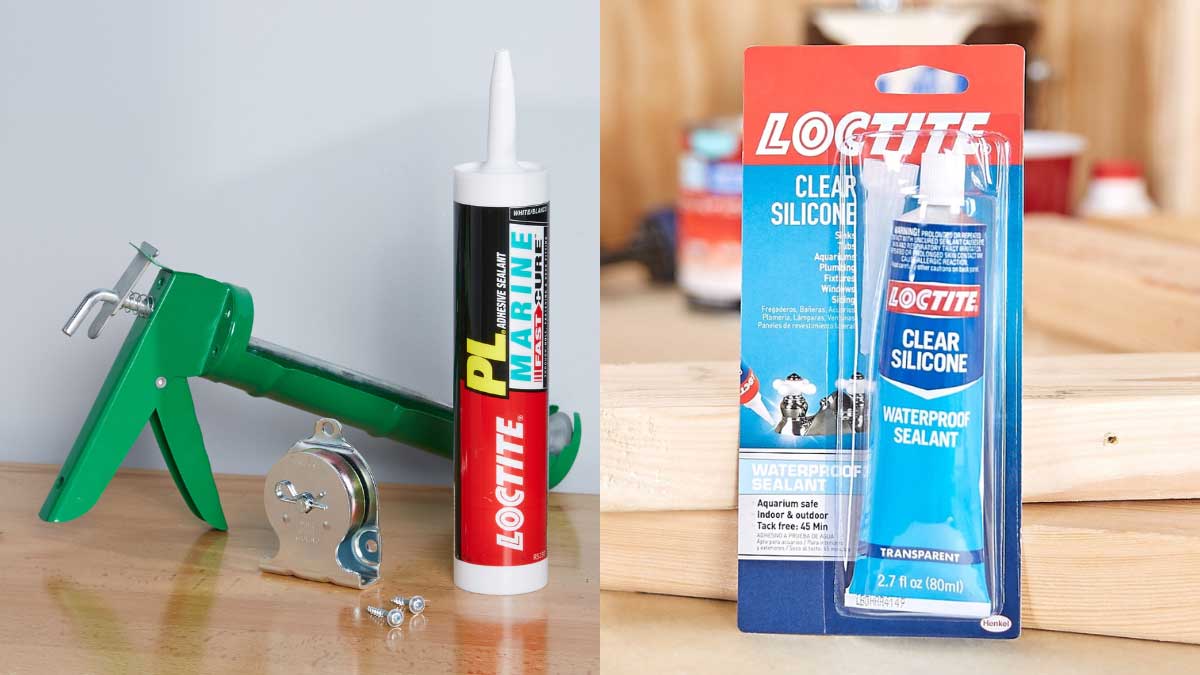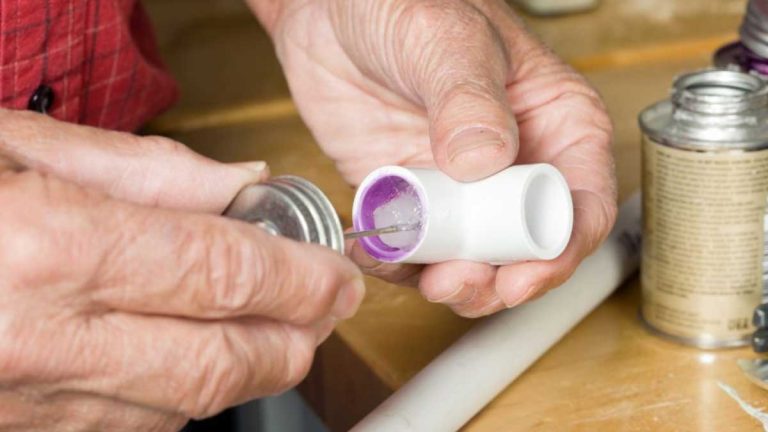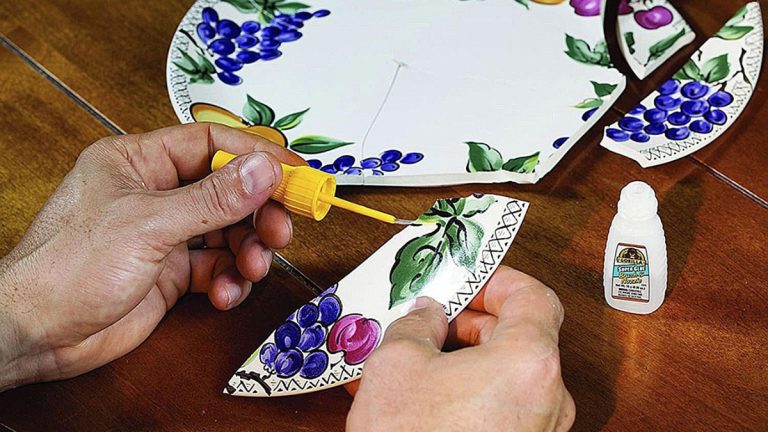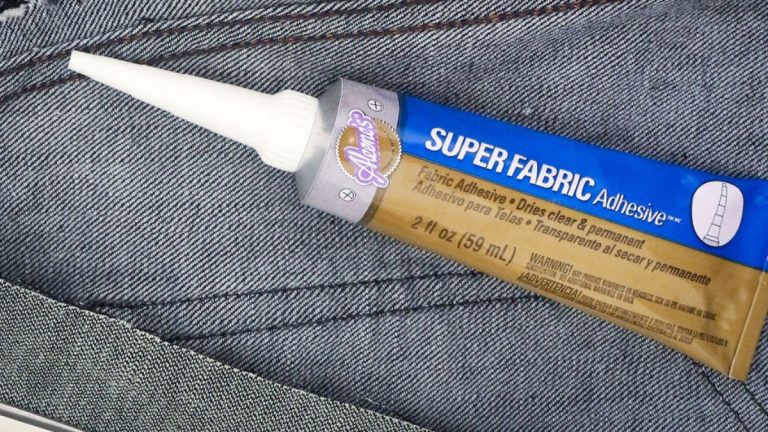Loctite PL Marine vs 5200: Which Marine Adhesive is Best?
When you’re tackling a marine project, choosing the right adhesive can make all the difference. Two popular options you’ll come across are Loctite PL Marine and 3M 5200. Both promise durability and strong bonding, but which one is truly the best for your needs?
In this text, we’ll jump into the key features, benefits, and drawbacks of Loctite PL Marine vs. 3M 5200. By the end, you’ll have a clear understanding of which adhesive suits your specific requirements, ensuring your marine projects stand the test of time.
Key Takeaways
- Fast Curing Time: Loctite PL Marine sets in 30 minutes and fully cures in 24 hours, making it ideal for quick repairs and rapid project completion compared to 3M 5200’s longer cure time.
- Material Compatibility: Loctite PL Marine adheres well to various materials such as teak, fiberglass, vinyl, glass, FRP, metal, and most plastics, offering versatile use for different applications.
- Environmental Resistance: Loctite PL Marine offers excellent environmental resistance, including UV exposure, saltwater, and freshwater conditions, making it suitable for both above and below the waterline.
- High Tensile Strength: 3M 5200 is known for its very high tensile strength and long-lasting durability, making it ideal for permanent, structural bonds, especially in harsh marine conditions.
- Professional and DIY Applications: Loctite PL Marine is more DIY-friendly due to its quick curing time and ease of application, while 3M 5200 is better suited for professional use requiring extended working time and robust bonding.
- Purpose-Specific Use: Choose Loctite PL Marine for rapid, temporary solutions and versatile applications, and opt for 3M 5200 for demanding, permanent bonding tasks below the waterline.
Overview Of Loctite PL Marine And 5200
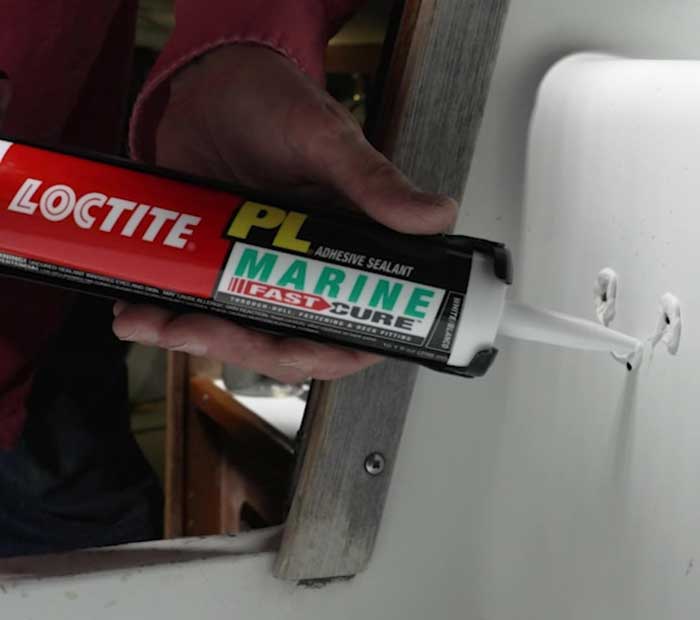
Chemical Composition and Properties
Loctite PL Marine Fast Cure Adhesive Sealant
- Type: Polyether, moisture-cure adhesive sealant
- Cure Time: Sets in 30 minutes, fully cured in 24 hours
- Properties:
- Forms a watertight, flexible seal above or below the waterline
- Free of solvents, phthalates, and isocyanates
- Does not shrink when cured, discolor from UV exposure, or bubble on damp surfaces
- Applications:
- Through-hull fastening
- Deck fittings
- Deck to hull joints
- Port lights
- Moldings
- Struts
- Planking
- Stem joints
- Adheres to various materials including teak, fiberglass, vinyl, glass, FRP, metal, gel coat, polycarbonate, and most plastics
3M 5200 Marine Adhesive Sealant
- Type: Polyurethane adhesive sealant
- Cure Time: Known for its long cure time, which can be beneficial for boatbuilders but challenging for DIY users
Comparative Table
| Feature | Loctite PL Marine | 3M 5200 |
|---|---|---|
| Chemical Type | Polyether | Polyurethane |
| Cure Time | 30 minutes (sets), 24 hours (fully cured) | Long cure time |
| Watertight Seal | Yes, flexible | Yes |
| Solvent-free | Yes | Varies |
| Shrinkage | No | Yes, minimal |
| UV Discoloration | No | Yes, minimal |
| Application | Above/below waterline | Above/below waterline |
| Suitable Materials | Teak, fiberglass, vinyl, glass, FRP, metal, gel coat, polycarbonate, most plastics | Metals, fiberglass, wood, plastics |
| Use Cases | Through-hull fastening, deck fittings, deck to hull joints, port lights, moldings, struts, planking, stem joints | Hull-to-deck joints, under waterline fittings, keel bonding, struts |
Key Points for Choosing the Right Adhesive Sealant
- Purpose: Identify the project requirements (e.g., through-hull fastening or deck fittings).
- Material Compatibility: Ensure the adhesive sealant adheres to the materials you’re working with (e.g., fiberglass or teak).
- Cure Time: Choose according to your project timeline (e.g., 30 minutes for Loctite PL Marine or longer for 3M 5200).
- Waterline Position: Consider if the sealant is needed above or below the waterline.
- Flexibility and Durability: Assess if a watertight and flexible seal is necessary for the application.
Summary
Select Loctite PL Marine Fast Cure if you need a quick-setting and versatile adhesive for various materials and conditions. Opt for 3M 5200 if you need a durable sealant with strong adhesion, even if it takes longer to cure.
Key Features And Benefits
Durability and Strength
Loctite PL Marine
- Chemical Type: Polyether-based, moisture-cure adhesive sealant.
- Strength: Excellent resistance to vibrations and shocks due to its flexible bond, making it suitable for various marine applications.
- Weather Durability: High durability in both saltwater and freshwater environments, ensuring long-lasting performance.
- Adhesion: Forms strong bonds with materials like teak, fiberglass, vinyl, glass, FRP, metal, gel coat, polycarbonate, and most plastics.
3M 5200
- Chemical Type: Polyurethane-based adhesive sealant.
- Strength: Renowned for its very high tensile strength, offering robust bonding for structural components.
- Weather Durability: Immunity to harsh marine conditions over a prolonged period, ideal for permanent bonding tasks.
- Adhesion: Bonds aggressively to metals, wood, gel coat, and fiberglass, among other surfaces.
Waterproofing
Loctite PL Marine
- Waterproof Capabilities: Provides a watertight seal once cured, ideal for through-hull fittings and deck joints.
- UV Resistance: Does not shrink or discolor under UV exposure, maintaining a clear finish over time.
- Use Cases: Suitable for external applications on boats exposed to varying moisture conditions.
3M 5200
- Waterproof Capabilities: Creates a robust seal against water, preventing leakage around fixtures and fittings.
- UV Resistance: Offers substantial protection against UV rays, reducing the risk of sealant degradation.
- Use Cases: Commonly employed in areas prone to water immersion, like hull seams and below-the-waterline joints.
Flexibility
Loctite PL Marine
- Flexibility: Maintains flexibility after curing, allowing for movement and expansion of bonded materials without cracking.
- Applications: Effective for parts subject to regular vibrations and mechanical stress, such as deck to hull joints and struts.
3M 5200
- Flexibility: Provides limited flexibility compared to polyether sealants but compensates with exceptional strength.
- Applications: Best for use in scenarios demanding high structural integrity, such as permanent seams and adhesive bonds.
Ease of Application
Loctite PL Marine
- Cure Time: Fast-setting, with an initial set in 30 minutes and full cure in 24 hours, convenient for quick repairs.
- Application: User-friendly for DIY enthusiasts, enabling efficient completion of marine repairs without prolonged downtime.
- Tools: Standard caulking gun suitable for application, minimal cleanup required.
3M 5200
- Cure Time: Takes several days to fully cure, providing ample working time for adjustments and alignment, essential in complex boatbuilding tasks.
- Application: More suited for professional use due to the longer curing time, requiring expertise to handle intricate marine projects.
- Tools: Requires careful handling and cleanup due to its high adhesive properties, specialist tools may be necessary.
| Feature | Loctite PL Marine | 3M 5200 |
|---|---|---|
| Chemical Type | Polyether-based, moisture-cure | Polyurethane-based |
| Cure Time | Sets in 30 minutes, fully cures in 24 hours | Several days to fully cure |
| Strength | High resistance to vibrations and shocks | Very high tensile strength |
| Weather Durability | Excellent in saltwater and freshwater | Superior durability in marine conditions |
| Waterproofing | Watertight, UV-resistant, no discoloration | Robust sealing, UV-protection |
| Flexibility | Retains flexibility after curing | Limited flexibility, high structural integrity |
| Ease of Application | Quick repairs, DIY-friendly | Professional use, extended working time |
Selecting between Loctite PL Marine and 3M 5200 hinges on project requirements. Choose Loctite PL Marine for rapid application and versatile material compatibility, while 3M 5200 is ideal for demanding structural bonding needing maximum strength.
Performance Comparison
When comparing Loctite PL Marine and 3M 5200, focusing on their performance is crucial. This section delves into adhesion strength, curing time, and UV resistance, providing a detailed comparison to help you choose the right adhesive for your marine projects.
Adhesion Strength
-
Loctite PL Marine:
- Demonstrates strong bonds with high adhesion strength.
- Comparable to 3M 4200 and Sika 291.
- Ideal for applications above and below the waterline.
- Performs well in bonding to teak, fiberglass, and metal.
-
3M 5200:
- Known for long-lasting bonds but shows inconsistent bonding to materials like aluminum, acrylic, and polyethylene.
- Failed at 55 psi during aluminum-bonding trials.
- Generally suited for robust, permanent bonding tasks but requires careful material consideration.
Curing Time
-
Loctite PL Marine:
- Fast-setting, moisture-cure adhesive.
- Sets in 30 minutes; fully cured in 24 hours.
- Suitable for quick, short-term repairs and installations.
-
3M 5200:
- Extended cure time, beneficial for professional boatbuilders.
- Fully cures in one to two weeks.
- Requires ample preparation and curing time, challenging for DIY projects.
UV Resistance
-
Loctite PL Marine:
- UV resistant, suitable for outdoor and marine applications.
- Maintains flexibility and integrity in various conditions.
- Also offers UV resistance.
- Ensures durability under prolonged sun exposure.
The durability and efficient curing time of Loctite PL Marine make it a versatile choice for quick repairs and flexible bonding needs, whereas 3M 5200’s strong, durable bonds are perfect for demanding structural tasks. Your choice should align with your project requirements considering both these adhesives’ distinct advantages.
Applications And Use Cases
Marine Applications
Understanding where to apply Loctite PL Marine and 3M 5200 is crucial for effective marine repairs and construction. Both sealants have unique use cases tailored to different marine projects.
Loctite PL Marine Fast Cure Adhesive Sealant
- Type: Polyether-based
- Use: Suitable above and below the waterline
- Applications:
- Through-Hull Fastening: Ensures watertight sealing
- Deck Fittings: Locks and seals deck hardware
- Deck to Hull Joints: Seamless integration between deck and hull
- Port Lights: Seals lights against water ingress
- Moldings, Struts, Planking: Ideal for decorative and structural components
- Stem Joints: Bonds the hull’s forward-most point
- Adhesion Capabilities: Bonds to teak, woods, fiberglass, vinyl, glass, FRP, metal, gel coat, polycarbonate, and plastics
- Properties:
- Flexibility: Handles vibrational and structural flex
- Durability: Endures saltwater and freshwater
- Environmental Resistance: Withstands UV exposure, no shrinkage or discoloration
3M 5200 Marine Adhesive Sealant
- Type: Polyurethane-based
- Use: Best below the waterline and for permanent bonds
- Applications:
- Hull to Deck: Long-term, strong bonding
- Keel to Hull: Ensures structural integrity over time
- Port Lights and Thru-Hull Fittings: Seals permanent structural elements
- Transom Repairs: Secure bonding of transom components
- Plank Repairs on Wooden Boats: Delivers long-term adhesion
- Assembly of Pontoons and Houseboats: Robust sealing for large watercraft components
- Adhesion Capabilities: Excellent bonding to wood, fiberglass, gel coat, plastics, and metals
- Properties:
- Strong Bonding: Designed for high-tensile strength applications
- Durability: Suited for harsh marine environments
- Flexibility: Withstands structural shifts and movements
Construction And Repairs
Your choice of adhesive sealant will directly impact the success of your marine construction and repair projects.
Loctite PL Marine
- Construction:
- New Boat Building: Useful for quick assembly due to fast curing time
- Installation of Marine Hardware: Swift sealing of cleats, rails, and fittings
- Waterproofing: Effective for areas frequently submerged
- Repairs:
- Quick Fixes: Suitable for urgent repairs, thanks to 24-hour full cure
- Versatility: Compatible with a range of materials
- On-Site Repairs: Ideal for field repairs under varying environmental conditions
3M 5200
- Construction:
- Structural Integrity: Essential for long-term boat structural elements
- Large Vessel Assembly: Robust bonding for extensive boat components
- Heavy-Duty Applications: Optimal for high-stress areas like sterns and hulls
- Repairs:
- Permanent Repairs: Suitable for crucial, non-recurrent repairs
- Major Overhauls: Ideal for comprehensive hull or keel repairs
- Professional Use: Preferred by boatbuilders for extensive projects
| Property | Loctite PL Marine | 3M 5200 |
|---|---|---|
| Type | Polyether | Polyurethane |
| Full Cure Time | 24 Hours | 7 Days |
| Application Range | Above and below waterline | Primarily below waterline |
| Material Compatibility | Teak, woods, fiberglass, vinyl, glass | Wood, fiberglass, gel coat, plastics, metals |
| Durability | Resistant to saltwater, freshwater, UV | High-tensile strength, harsh environments |
| Flexibility | High | High |
For varying marine applications, Loctite PL Marine’s fast cure and versatility make it an excellent choice for quick, diverse repairs. For substantial, durable construction and repairs, the robust nature of 3M 5200 ensures reliability even in demanding conditions. Understanding these differences will help you choose the right sealant for your specific needs.
Pros And Cons
Loctite PL Marine
Pros:
- Fast Setting: Loctite PL Marine sets in 30 minutes and fully cures in 24 hours. It’s quicker than 3M 5200, allowing for rapid project completion.
- Wide Compatibility: Adheres well to various materials. Examples include teak, fiberglass, vinyl, glass, FRP, metal, gel coat, polycarbonate, and most plastics.
- Environmental Resistance: Doesn’t shrink when cured, discolor from UV exposure, or bubble on damp surfaces. Endures both saltwater and freshwater environments.
- Flexible and Watertight: Forms a watertight, flexible seal once cured. Suitable for through-hull fastening, deck fittings, and deck-to-hull joints.
- Free of Harmful Chemicals: Free of solvents, phthalates, and isocyanides, making it safer to use.
Cons:
- Limited Long-Term Data: Though it performs well in field tests, long-term data may be less extensive compared to 3M 5200.
3M 5200
Pros:
- High Tensile Strength: Known for very high tensile strength, making it ideal for structural bonding tasks.
- Durable Sealant: Offers superior durability in harsh marine conditions, suited for permanent bonds.
- Wide Usage: Preferred for applications below the waterline like hull-to-deck and keel-to-hull bonds.
Cons:
- Long Cure Time: Requires a longer curing time, which can be challenging for DIY projects but advantageous for professionals who need strong, secure bonds.
- Inconsistent Bonding: Bonding effectiveness can be inconsistent on certain materials, requiring careful consideration.
Comparative Table
| Feature | Loctite PL Marine | 3M 5200 |
|---|---|---|
| Chemical Type | Polyether | Polyurethane |
| Cure Time | 30 minutes (set), 24 hours (full) | 48 hours (set), up to 7 days (full) |
| Watertight Seal | Yes | Yes |
| Material Compatibility | Teak, fiberglass, vinyl, glass, FRP, metal, gel coat, polycarbonate, most plastics | Fiberglass, wood, metal, gel coat |
| UV Resistance | Yes | Yes |
| Environmental Resistance | Saltwater, freshwater | Saltwater, freshwater |
| Flexible Seal | Yes | No |
| Harmful Chemicals | Free | Not specified |
| Long-Term Data | Limited | Extensive |
Summary
Selecting the right adhesive depends on your project’s specific requirements. Loctite PL Marine offers fast setting, environmental resistance, and wide material compatibility, making it ideal for quick repairs and various applications. On the other hand, 3M 5200 excels in tensile strength and durability, making it suitable for long-term, permanent bonds, especially below the waterline. Consider the curing time, material compatibility, and environmental conditions when choosing between these adhesives for your marine projects.
Conclusion
Choosing between Loctite PL Marine and 3M 5200 eventually depends on your specific marine project needs. If you require a quick-setting adhesive with versatility and ease of use, Loctite PL Marine is an excellent choice. It offers fast curing times, strong bonds, and adaptability to various materials.
On the other hand, if your project demands long-term durability and high tensile strength, 3M 5200 stands out. Though it requires a longer cure time, its superior adhesion makes it ideal for permanent bonding tasks.
Consider your project requirements, material compatibility, and desired cure time to make the best decision. Both adhesives have their unique strengths, ensuring you’ll find the right solution for your marine applications.
Frequently Asked Questions
How long does 3M 5200 last?
When stored in its original, unopened container at recommended conditions, 3M™ Marine High Performance Adhesive Sealant 5200 has a shelf life of 24 months from the date of manufacture.
Can Loctite PL Marine be applied underwater?
Yes, Loctite Marine Epoxy, including Loctite PL Marine, can be applied and cured underwater, eliminating the need to remove water before making repairs.
Is 3M 5200 safe for fish?
3M does not recommend using 3M Marine Adhesive/Sealant 5200, 4200, or 4000UV in swimming pools, hot tubs, potable water containers, or fish ponds.
Will 3M 5200 adhere to StarBoard?
While 3M 5200 is effective as a water-sealing caulk, it does not create a permanent bond with materials like King StarBoard®.
What is the strongest marine adhesive?
The 3M 5200, known for its unmatched strength and tenacity, is considered one of the strongest marine adhesives and is often the go-to choice for high-demand applications.

